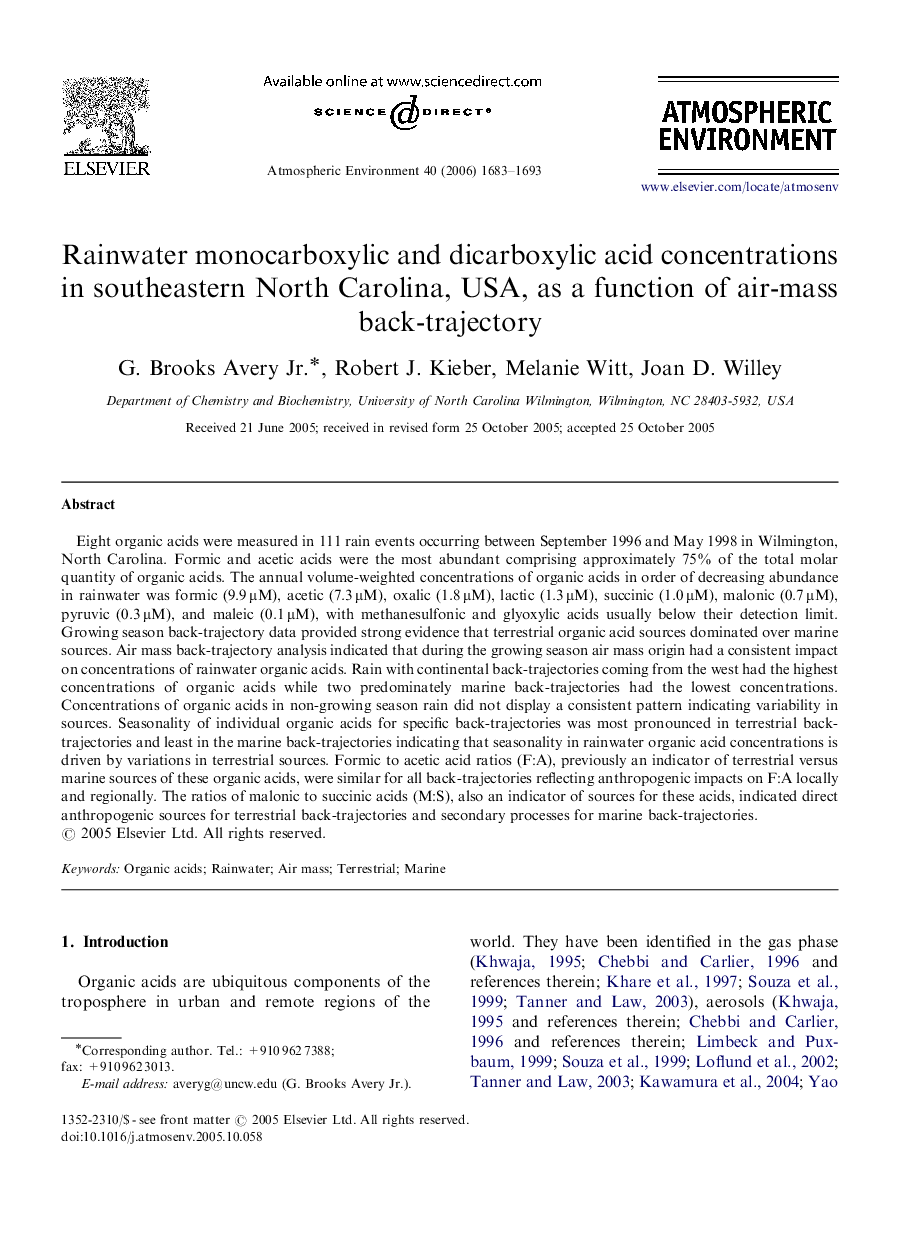| کد مقاله | کد نشریه | سال انتشار | مقاله انگلیسی | نسخه تمام متن |
|---|---|---|---|---|
| 4444571 | 1311245 | 2006 | 11 صفحه PDF | دانلود رایگان |

Eight organic acids were measured in 111 rain events occurring between September 1996 and May 1998 in Wilmington, North Carolina. Formic and acetic acids were the most abundant comprising approximately 75% of the total molar quantity of organic acids. The annual volume-weighted concentrations of organic acids in order of decreasing abundance in rainwater was formic (9.9 μM), acetic (7.3 μM), oxalic (1.8 μM), lactic (1.3 μM), succinic (1.0 μM), malonic (0.7 μM), pyruvic (0.3 μM), and maleic (0.1 μM), with methanesulfonic and glyoxylic acids usually below their detection limit. Growing season back-trajectory data provided strong evidence that terrestrial organic acid sources dominated over marine sources. Air mass back-trajectory analysis indicated that during the growing season air mass origin had a consistent impact on concentrations of rainwater organic acids. Rain with continental back-trajectories coming from the west had the highest concentrations of organic acids while two predominately marine back-trajectories had the lowest concentrations. Concentrations of organic acids in non-growing season rain did not display a consistent pattern indicating variability in sources. Seasonality of individual organic acids for specific back-trajectories was most pronounced in terrestrial back-trajectories and least in the marine back-trajectories indicating that seasonality in rainwater organic acid concentrations is driven by variations in terrestrial sources. Formic to acetic acid ratios (F:A), previously an indicator of terrestrial versus marine sources of these organic acids, were similar for all back-trajectories reflecting anthropogenic impacts on F:A locally and regionally. The ratios of malonic to succinic acids (M:S), also an indicator of sources for these acids, indicated direct anthropogenic sources for terrestrial back-trajectories and secondary processes for marine back-trajectories.
Journal: Atmospheric Environment - Volume 40, Issue 9, March 2006, Pages 1683–1693